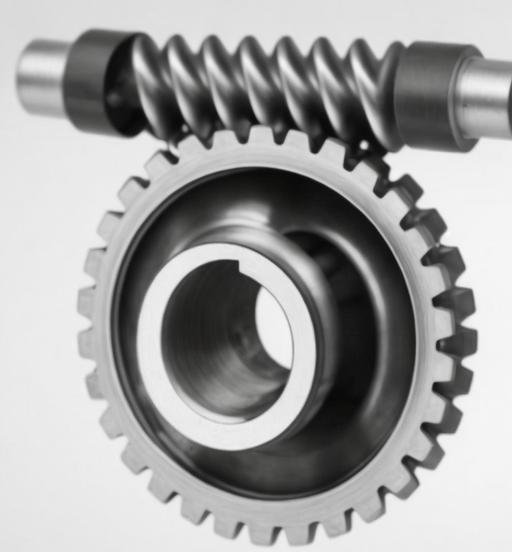Selecting materials and heat treatment processes for high-durability worm gear involves considering factors such as strength, wear resistance, and operational environment. Here’s a detailed look at suitable materials and heat treatment processes:

Material Selection
- Worm Gear Materials:
- Case-Hardened Steels: Commonly used steels include AISI 8620 and AISI 4140, which offer good core strength and wear resistance after heat treatment.
- Alloy Steels: Steels like 42CrMo4 and 34CrNiMo6 are used for their high strength and toughness.
- Worm Wheel Materials:
- Bronze: Phosphor bronze (e.g., CuSn12) and aluminum bronze (e.g., CuAl10Fe5Ni5) are popular choices due to their good frictional properties and wear resistance.
- Cast Iron: High-strength cast irons, such as nodular (ductile) iron, offer good wear resistance and are cost-effective.
- Advanced Materials:
- Composite Materials: Incorporating high-strength fibers or fillers to improve wear resistance and reduce weight.
- Self-Lubricating Polymers: Engineering plastics like PA6 (Nylon) filled with lubricants to reduce friction and wear.
Heat Treatment Processes
- Case Hardening:
- Carburizing: A heat treatment process where carbon is diffused into the surface layer of worm gear. This provides a hard, wear-resistant surface while maintaining a tough core.
- Nitriding: Introducing nitrogen into the surface layer, creating a hard, wear-resistant surface without the need for quenching, which reduces distortion.
- Quenching and Tempering:
- Quenching: Rapid cooling of worm gear from a high temperature to increase hardness. Often followed by tempering to relieve stresses and improve toughness.
- Tempering: Reheating the quenched gear to a lower temperature to reduce brittleness while maintaining hardness.
- Induction Hardening:
- Induction Hardening: Using electromagnetic induction to heat worm gear surface rapidly followed by immediate quenching. This process allows for precise control of the hardened layer’s depth.
- Cryogenic Treatment:
- Cryogenic Treatment: Exposing worm gear to extremely low temperatures to transform retained austenite into martensite, increasing wear resistance and dimensional stability.
Specific Processes and Combinations
- Carburizing followed by Quenching and Tempering:
- Commonly used for case-hardened steels, providing a hard surface and a tough core, ideal for high-load applications.
- Nitriding:
- Suitable for components requiring minimal distortion and high surface hardness. Ideal for worm gear operating in high-stress environments.
- Induction Hardening with Tempering:
- Provides a hard, wear-resistant surface with good core properties, suitable for large gear where only the surface needs hardening.
Examples of Material and Treatment Combinations
- AISI 8620 Steel with Carburizing:
- Offers a hard, wear-resistant surface with a tough core, commonly used in automotive and heavy machinery worm gear.
- 42CrMo4 Steel with Nitriding:
- Provides excellent wear resistance and fatigue strength, suitable for high-stress industrial applications.
- Phosphor Bronze with Surface Hardening:
- Ensures good frictional properties and wear resistance, ideal for worm wheels in precision machinery.
By carefully selecting the appropriate materials and heat treatment processes, manufacturers can produce worm gear that offer high durability, reliability, and performance in demanding applications.
